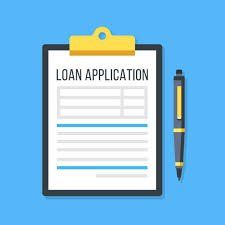Loan Application Tips

Whether you are purchasing a home or refinancing your current mortgage, the most important step is completing your mortgage loan application.
The official title for this form is the:
Uniform Residential Loan Application (URLA).
Be sure to work with your loan officer to complete the application accurately and completely and take your time when answering the questions on the application.
NOTE: If you enter false or inaccurate information on your mortgage application, it can seriously harm your chances of being approved and is illegal.
All of the personal information on your application is confidential and protected by federal law.
Create a loan application packet
You will need to provide your lender some information about your finances.
It is advisable to gather the information below now, so that you will have it ready for your lender.
Gather your personal and financial information
- Pay stubs – most recent 30 days
- W-2 forms – last two years
- Signed federal tax returns – last two years
- Documentation of any other sources of income
- Bank statements – 2 most recent months
- Documentation of the source of your down payment: investment or savings account statements showing at least two months’ history of ownership. If some of the funds are a gift, obtain a signed statement from the donor stating that the funds are a gift.
- Documentation of name change (if recent)
- Proof of your identity (typically a drivers’ license or non-driver ID)
- Social security number
- Certificate of housing counseling or home buyer education (if you have one)
For Servicemembers or Veterans:
You should obtain a certificate of eligibility from the VA. The VA’s Home Loan Guarantee Program is a good option for veterans and servicemembers to consider, and you will need this certificate if you decide to go this route.
What You Should Know About Your Mortgage Loan Application
The more organized you are – the faster the loan approval process is likely to be.
Make sure your documents are accurate and complete.
Your lender will use the information you provide to decide how much they are willing to lend you and at what interest rate. If your information is inaccurate, you could encounter costly surprises down the road.
If your documents are incomplete, lenders may reject them.
- Make sure to include every page of multi-page documents, even ones marked “intentionally left blank.”
- Make sure when printing online documents that the full URL is included on the bottom of each page.
Chances are, you will need to update your loan application packet at least once during this process. Lenders like to see the most recent bank statements, pay stubs, etc. If you access any of these items online, write a reminder to yourself on how to find the information again so you can update your application package easily.
If you are self-employed or have irregular or non-wage income, you may need additional documentation. Requirements vary from lender to lender and depending on your specific situation
A Section-by-Section Guide to Your Mortgage Loan Application
The mortgage loan application contains 10 sections. Your loan officer will assist you with many sections of this document, especially as they relate to the type of mortgage and terms of the mortgage loan.
Important Documents required to complete your loan application
Here is a list of standard documentation you will need to provide in order to complete Sections IV and VI of the mortgage loan application:
- Paycheck stubs for the past 30 days.
- W-2 forms for the past two years.
- Information about long-term debts, such as car loans, student loans, etc.
- Recent statements from all of your bank accounts.
- Personal Tax returns for the past two years
- Business Tax returns for the past two years (if applicable)
- Proof of any supplemental income.
Pre-Approval and - on the way to the Next Step
Once the application is complete, your loan officer will review it with you and ask you and any co-borrowers to sign it. Your loan officer will then send it through their organization to obtain approvals. If it is approved, you will receive a pre-approval letter, which is the lender’s conditional commitment to lend you a specific amount of money for your home purchase or refinance transaction.
For a home purchase: With the pre-approval, you will know how much your maximum purchase price will be.
While this is helpful information, you will need to decide for yourself if you can live comfortably with the amount of your suggested mortgage and the associated monthly mortgage payment and misc. housing expenses.




